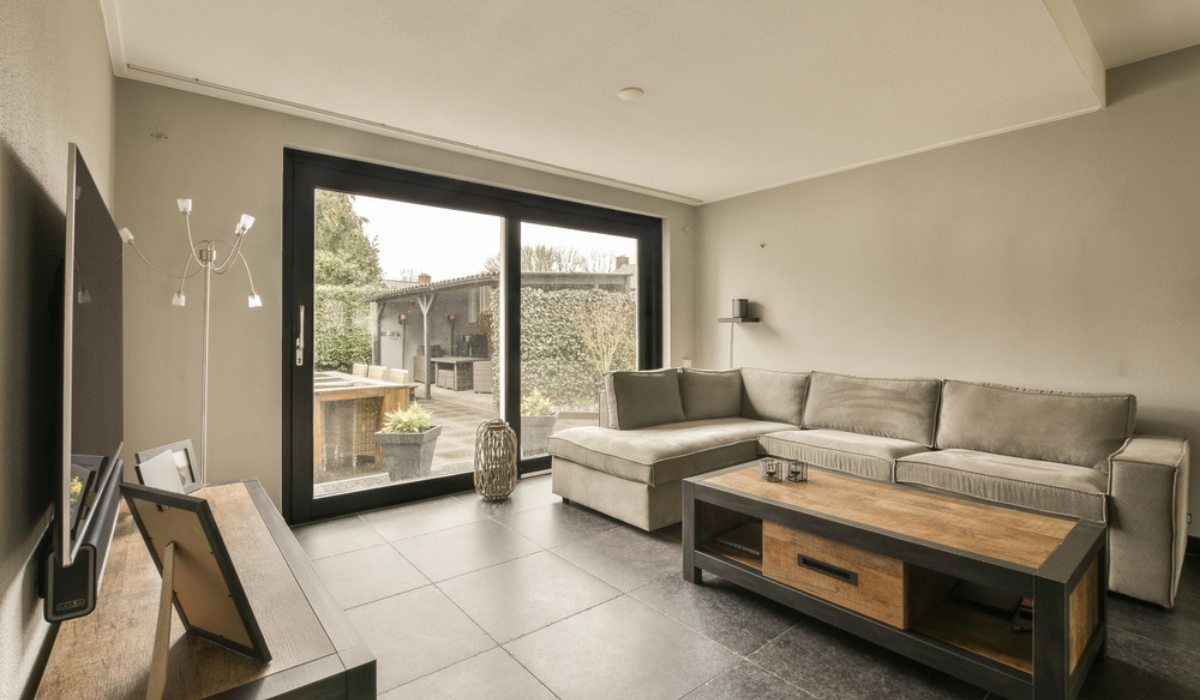Glass that allows for both natural light and privacy is incredibly helpful in architectural designs and construction. Firstly, it brightens spaces by allowing sunlight in, reducing the need for artificial lighting and creating a more cheerful atmosphere that is better for our mood and energy. It also provides privacy without obstructing light, which is crucial in areas like restrooms and offices. It can even make us feel safer because certain types of glass are more difficult to break. It also blends in well with many different types of buildings due to its modern and stylish appearance. It’s suitable for a variety of applications, including windows and shower doors. In this article you’ll get to know about its type.
Etched glass
Etched glass is a timeless choice that has a frosted or patterned design on it. It gives you some privacy but still lets in soft, diffused light. A lot of people use it for windows in bathrooms or for shower doors because it gives you just the right amount of privacy while still keeping the space feeling bright and open.
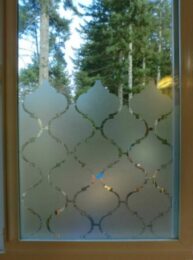
Source: Pinterest
Stained glass
Stained glass is like a colourful puzzle where pieces are put together to make amazing designs. It’s used in places like churches and old buildings, but also in fancy homes as decorations. Depending on the colours and patterns, it lets in different amounts of light and gives you some privacy too. It’s a cool way to make a space look awesome and unique!
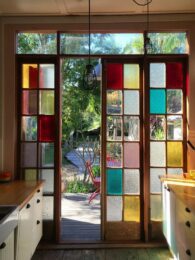
Source: Pinterest
Textured glass
Textured glass is similar to having a cool pattern on the surface. The pattern can provide various levels of privacy and let in light depending on how deep it is. It is commonly found in office dividers, cabinet doors, and showers. It’s a neat way to add style to a room while keeping things private.
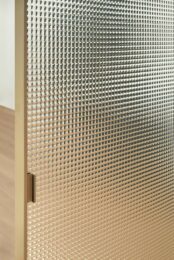
Source: Pinterest
Reflective glass
Reflective glass is like a mirror for your windows. It bounces light and heat away from the outside, which gives you privacy during the day. At night, when your lights are on inside, it lets you see out without others seeing in. But during the day, it can make it hard to see out from the inside. It is commonly used in tall buildings to keep them cool and modern.
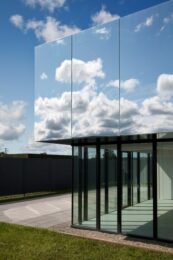
Source: Pinterest
Low-emissivity (Low-E) glass
A unique coating on low-emissivity (Low-E) glass allows sunlight to pass through while reflecting heat back, maintaining a comfortable interior temperature while using less energy. You can even combine it with other types of privacy glass to maximise its benefits. It’s like having a window that keeps you comfortable while saving you money on energy bills.
Fritted glass
Fritted glass is all about adding tiny ceramic particles onto the glass surface. Depending on how many particles there are, it can make the glass more or less see-through and change how light spreads through it. You’ll often spot it in fancy building exteriors or as pretty panels for decoration. It’s a cool way to play with light and privacy in architecture.
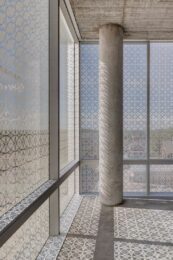
Source: Pinterest
FAQs
Consider the desired privacy level, light needs, aesthetics, and budget.
Not exactly. The mirrored glass reflects everything, while true one-way glass allows you to see out while remaining unseen.
This glass allows visible light in while reflecting infrared radiation, improving energy efficiency.
Blinds are integrated within a double-glazed unit, allowing privacy control without compromising aesthetics.
Yes, architects and designers can customise combinations of privacy glass to meet specific requirements.
Yes, reflective glass reflects light and heat from the outside during the day, offering privacy, while at night, when interior lights are on, it allows clear views from the inside out.
Textured glass has a patterned surface that diffuses light, creating different levels of opacity and privacy depending on the density of the texture. How do I choose the right type of glass?
Is mirrored glass the same as one-way glass?
What is Low-E glass?
What are vertical blinds integrated between glass (VBIG)?
Are there customisable options for combining different types of privacy glass for specific needs?
Can reflective glass be used effectively for privacy during the day and clear views at night?
How does textured glass create varying levels of privacy and light diffusion?
| Got any questions or point of view on our article? We would love to hear from you. Write to our Editor-in-Chief Jhumur Ghosh at jhumur.ghosh1@housing.com |
